Softwood scrub is one of those uniquely Queensland terms. Early European settlers gave this name to the dark green patches of low, dense scrubby vegetation that grew on the subcoastal hills and ranges in South East Queensland (SEQ). Regional Ecosystem (RE) 12.9-10.15 is considered part of the softwood scrub.
Softwood scrub is a type of dry rainforest and contains many different trees, shrubs and vines. Plants are often small-leaved due to the relatively low rainfall and some have thorns or spines.
Tall trees of Narrow-leaved Bottle Tree (Brachychiton rupestris), Crows Ash (Flindersia australis), Rosewood (Acacia fasciculifera) and Small-leaved Fig (Ficus obliqua) rise above the canopy. While Narrow-leaved Bottle Tree and Crows Ash may be as tall as 25-30m, the canopy itself is uneven and ranges in height from 2-12m and is composed of densely packed small trees and shrubs. Scattered trees of Brigalow (Acacia harpophylla) may also be present.
Vines are very common in RE 12.9-10.15. They climb and drape over trees and often hang down to near ground level, one of the reasons why these ecological communities are referred to as ‘vine thickets’.
The ground layer largely comprises soil, rock and leaf litter but some shade tolerant grasses, forbs and ferns may occur. Soils supporting softwood scrub are usually fertile and well-drained.
RE 12.9-10.15 is formally defined as semi-evergreen vine thicket (SEVT) with Narrow-leaved Bottle Tree and microphyll vine forest in which Hoop Pine (Araucaria cunninghamii) may be present, growing on sedimentary rocks. The term ‘semi-evergreen’ refers to the tendency for plants to shed leaves during the dry spring season and during drought. The term ‘microphyll’ refers to the average size of the leaves of canopy trees when they are exposed to sunlight (not those in the shade). Microphyll-sized leaves are relatively small – up to 7.5 cm long and 3.5 cm wide.
Distribution
RE 12.9-10.15 grows on sedimentary rocks in gently undulating to hilly country receiving an average rainfall of 700-1000 mm per year. The sedimentary rocks on which RE 12.9-10.15 occurs are soft and easily weathered and form loamy to light clay soils.
Variations and Similarities
The presence of Narrow-leaved Bottle Tree distinguishes semi-evergreen vine thickets from Hoop Pine vine forests. Hoop Pine vine forests occur in slightly moister situations (e.g. sheltered slopes) and Hoop Pine is usually present.
Within SEQ, semi-evergreen vine thickets grow on a range of geologies. Consequently, four different REs, including RE 12.9-10.15, are recognised based upon the type of country where they grow. Similar vegetation communities that occur on geologies different from RE 12.9-10.15 are:
- RE 12.8.21 Semi-evergreen vine thicket on Cainozoic igneous rocks (especially basalt).
- RE 12.11.13 Semi-evergreen vine thicket on metamorphics +/- interbedded volcanics.
- RE 12.12.17 Semi-evergreen vine thicket on Mesozoic to Proterozoic igneous rocks.
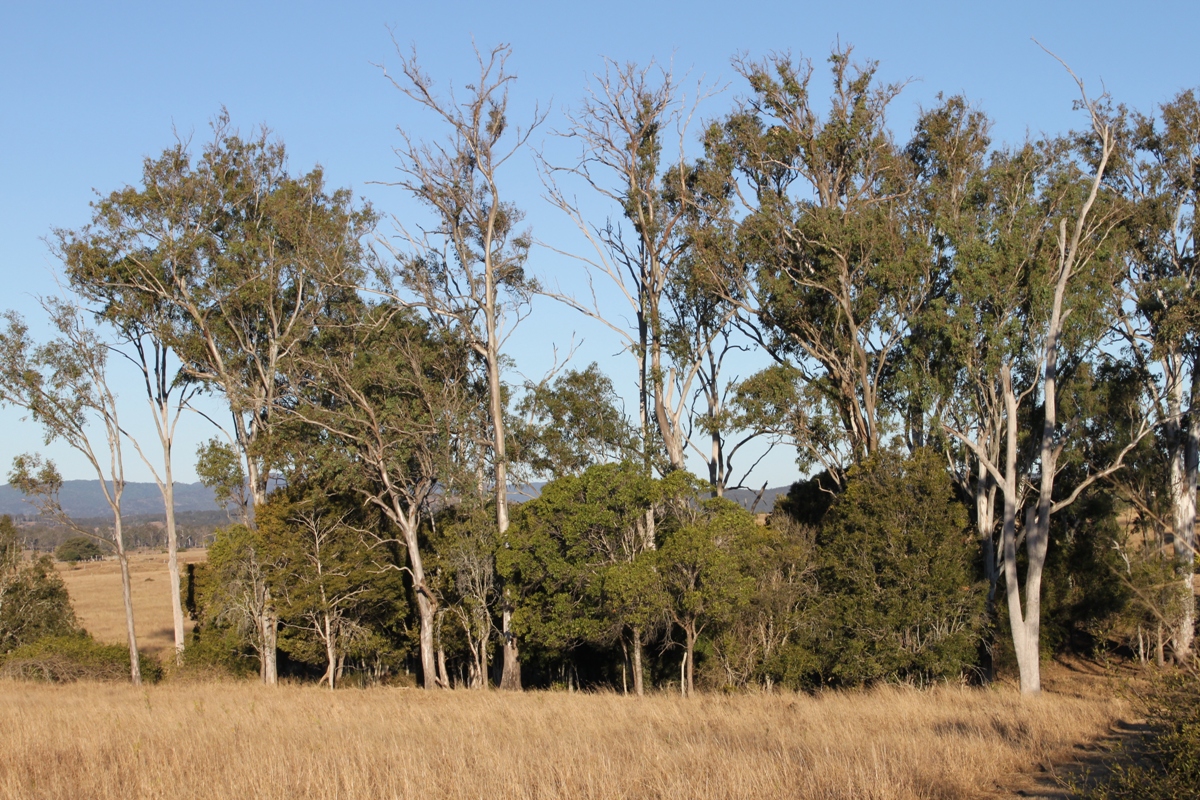
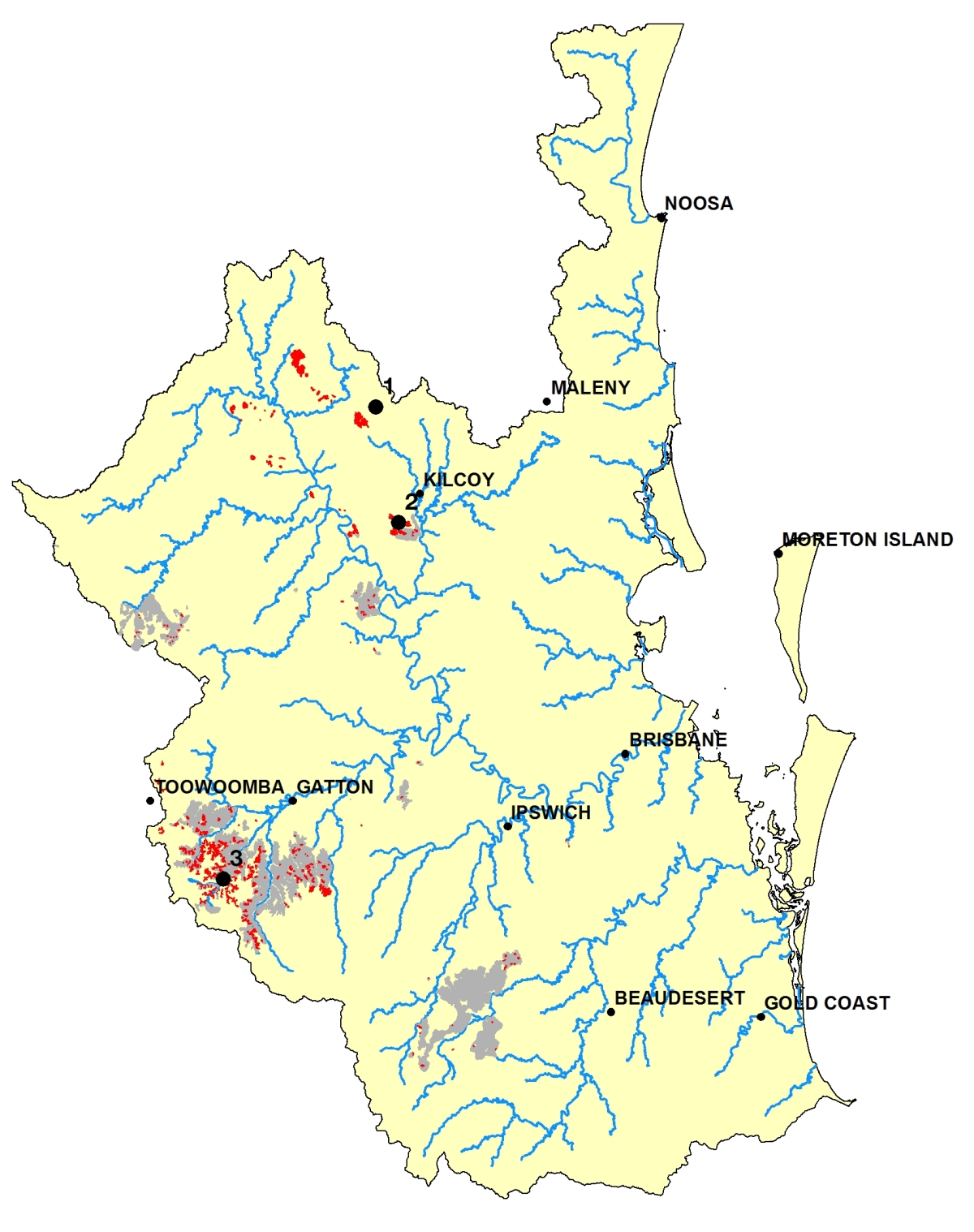
1. Conondale Forest Reserve, Monslidale Road, Monslidale. RE 12.9-10.15 can be view along the roadside as it winds up the range.
2. Esk-Kilcoy Road, Hazeldean. At this location, the hills to the west of the road are covered in RE 12.9-10.15 on the steep slopes behind the residential estate. Many patches of this Regional Ecosystem remain because the steep and difficult terrain restricts other use of this land.
3. Dwyer’s Scrub Conservation Park, Fordsdale. This remnant forest is situated on both basalt and sedimentary rocks, so two vine thicket REs are present; RE 12.9-10.15 and RE 12.8.21. Dwyer’s Scrub is a great place to view Narrowleaved Bottle Tree in its natural habitat, with the spreading crowns rising above a dense sea of smaller trees and shrubs.
Natural Values
Vine thicket patches act as cool shady islands surrounded by hotter open pasture and woodland habitats, and are used for shelter and food by a wide range of birds and small to medium-sized mammals. Many plant species are bird-dispersed and some of the fruit-eating species use vine thickets as stepping stones on seasonal and annual migration routes.
Some Native Plants of RE 12.9-10.15
Tall Trees
Crow’s Ash Flindersia australis
Crow’s Apple Owenia venosa
Ivorywood Siphonodon australis
Moreton Bay Fig Ficus macrophylla
Narrow-leaved Bottle Tree Brachychiton rupestris
Pine Mountain Coral Tree Erythrina numerosa
Rosewood Acacia fasciculifera
Silky Oak Grevillea robusta
Small-leaved Fig Ficus obliqua
Yellowwood Flindersia xanthoxyla
Trees and Shrubs
Bastard Crow’s Ash Pentaceras australis
Black-fruited Thornbush Pittosporum viscidum
Broad-leaved Leopard Ash Flindersia collina
Brush Hovea Hovea longipes
Celerywood Polyscias elegans
Chain Fruit Alyxia ruscifolia
Currant Bush Carissa ovata
Daisy Bush Olearia canescens
Deep Yellowwood Rhodosphaera rhodanthema
Diplospora Triflorensa cameronii
Hard Alectryon Alectryon subdentatus
Holly-leaved Pittosporum Auranticarpa rhombifolia
Mock Olive Notelaea macrocarpa
Native Holly Alchornea ilicifolia
Native Witch Hazel Turrraea pubescens
Native Pomegranate Capparis arborea
Orange Bark Maytenus bilocularis
Pavetta Pavetta australiensis
Prickly Pine Bursaria incana
Python Tree Gossia bidwillii
Red Olive Plum Elaeodendron australe
Scaly Ebony Diospyros geminata
Scrub Whitewood Atalaya salicifolia
Scrub Ironbark Bridelea exaltata
Scrub Poison Tree Excoecaria dallachyana
Scrub Wilga Geijera salicifolia
Shiny-leaved Canthium Psydrax odorata form buxifolia
Shrubby Deeringia Deeringia amaranthoides
Small-leaved Acalypha Acalypha capillipes
Small-leaved Canthium Everistia vaccinifolia
Small-leaved Coondoo Pouteria cotinifolia
Small-leaved Phyllanthus Phyllanthus microcladus
Small-leaved Tuckeroo Cupaniopsis parvifolia
Southern Erythroxylon Erythroxylon sp. ‘Splityard Creek’
Strychnine Tree Strychnos psilosperma
Thorny Yellow Wood Zanthoxylum brachyacanthum
Turkey Bush Acalypha eremorum
Veiny Denhamia Denhamia pittosporoides
Weeping Pittosporum Pittosporum angustifolium
Whalebone Tree Streblus brunonianus
White Tamarind Elattostachys xylocarpa
Pioneer Species
Bellfruit Tree Codonocarpus attenuatus
Bitter Bark Alstonia constricta
Flannel Weed Abutilon oxycarpum
Green Kamala Mallotus claoxyloides
Hickory Wattle Acacia disparrima subsp. disparrima
Lolly Bush Clerodendrum floribundum
Maiden’s Wattle Acacia maidenii
Native Cascarilla Croton insularis
Native Rosella Hibiscus heterophyllus
Poison Peach Trema tomentosa
Peach Bush Ehretia membranifola
Red Kamala Mallotus philippensis
Scrub Boonaree Alectryon diversifolius
White Cedar Melia azedarach
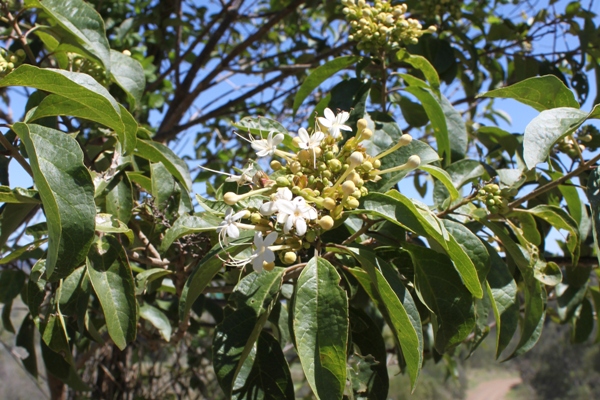
Vines and Scramblers
Black Silkpod Parsonsia leichhardtii
Blood Vine Austrosteensia blackii
Bower Vine Pandorea pandorana
Burney Vine Trophis scandens
Corky Prickle Vine Caesalpinia subtropica
Hairy Silkpod Parsonsia velutina
Hairy Water Vine Cayratia acris
Hoya Hoya australis
Lloyd’s Milk Vine Marsdenia lloydii
Native Grape Tetrastigma nitens
Native Jasmine Jasminum didymum subsp. racemosum
Pleogyne Pleogyne australis
Scrambling Caper Capparis sarmentosa
Stiff Jasmine Jasminum volubile
Stinging Vine Tragia novae-hollandiae
Wombat Berry Eustrephus latifolius
Zig Zag Vine Melodorum leichhardtii
Grasses, Forbs, Ferns, Epiphytes
Dwarf Sickle Fern Pellaea nana
Felt Fern Pyrrosia confluens
Hooky Grass Ancistrachne uncinulata
Rough Maidenhair Fern Adiantum hispidulum
Stout Bamboo Grass Austrostipa ramosissima
Square-stemmed Broom Spartothamnella juncea
Restoration Tips
- Plan the project thoroughly, as ecological restoration of softwood scrub is slow and requires major inputs.
- Make use of the huge volume of information about softwood scrub in SEQ and nearby areas available on the internet.
- Become familiar with the local flora by observing the species surviving in gullies, roadsides etc. Also bear in mind that those prickly looking plants in the paddock are probably native species that will make a contribution to the project.
- If your project is going to need lots of planting, try growing your own! Most softwood scrub and dry rainforest trees and shrubs are much easier to germinate than eucalypts and bottlebrushes! The seed you collect doesn’t usually stay viable for long so remember, fresh is best.
- Don’t get carried away planting vines too early in the project. They tend to become rampant and smother trees and shrubs.
- Control or limit the use of fire and grazing to avoid damage to the regeneration.
- Protect the genetic resources of local wild populations of plants by reducing the risk of cross pollination with planted species sourced from outside the local area or planting species that did not occur within your local area.

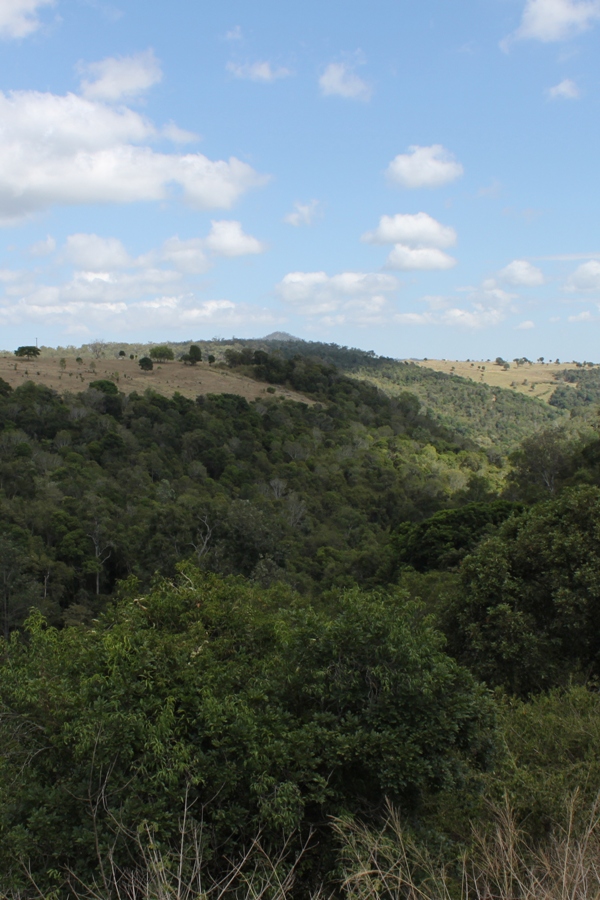
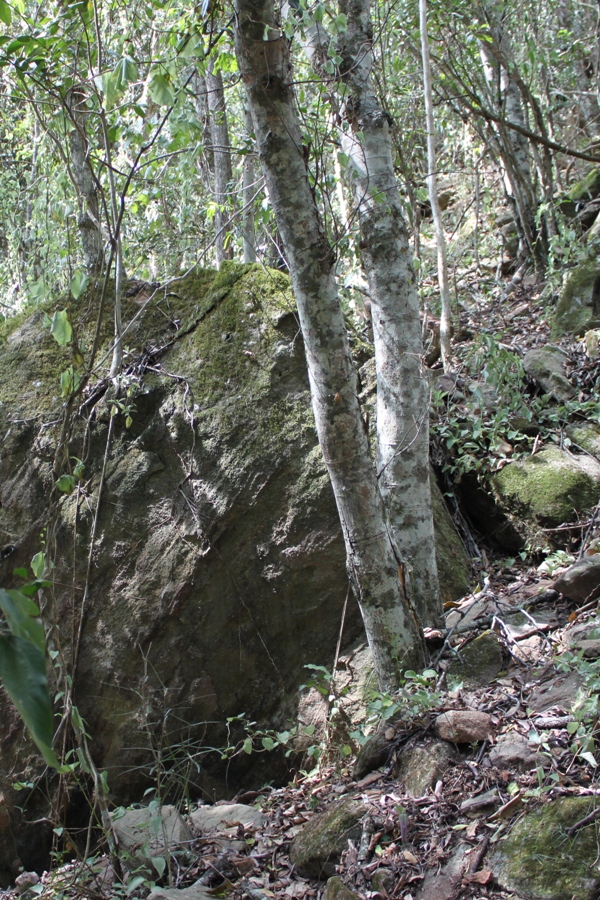
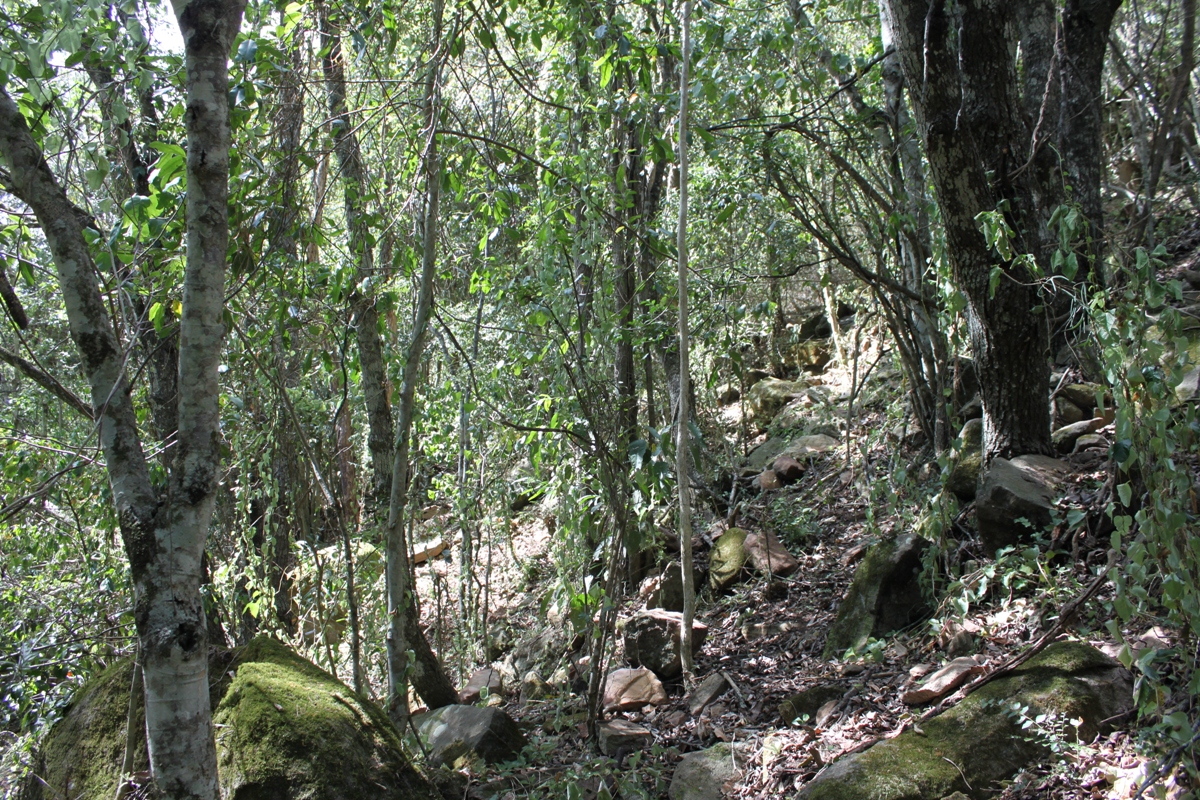
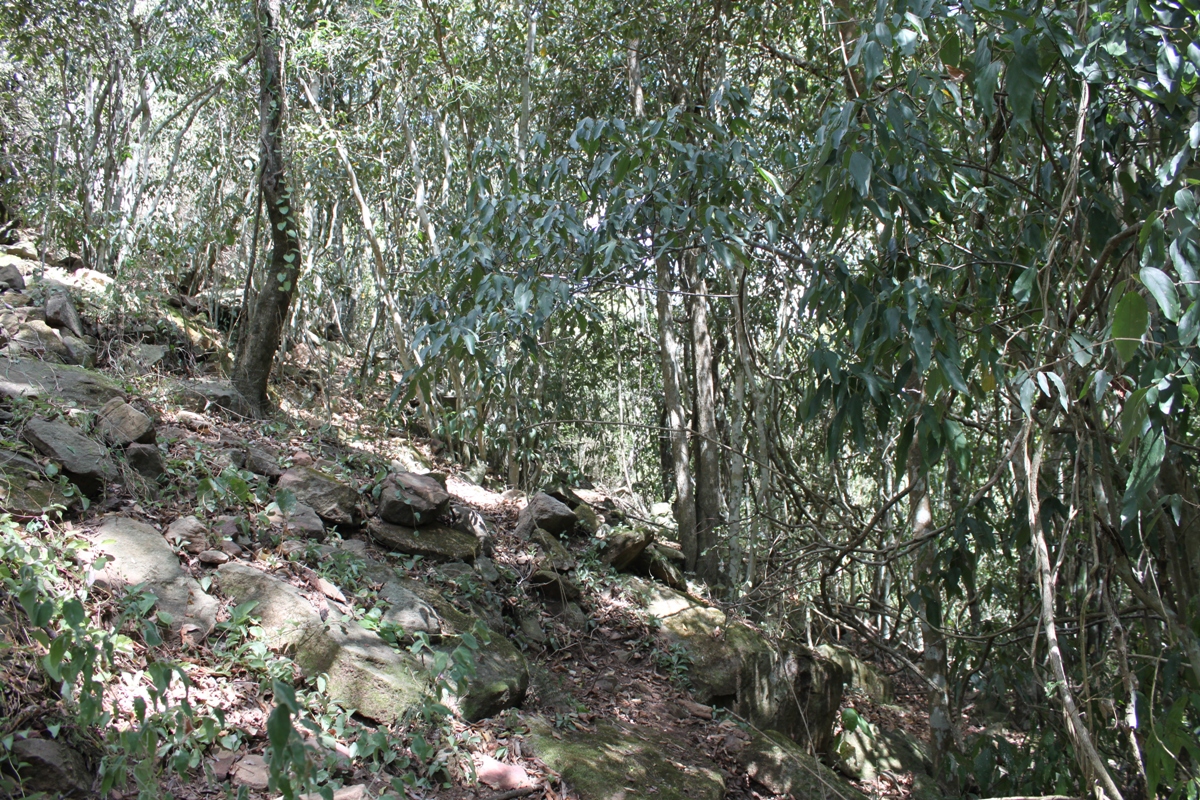
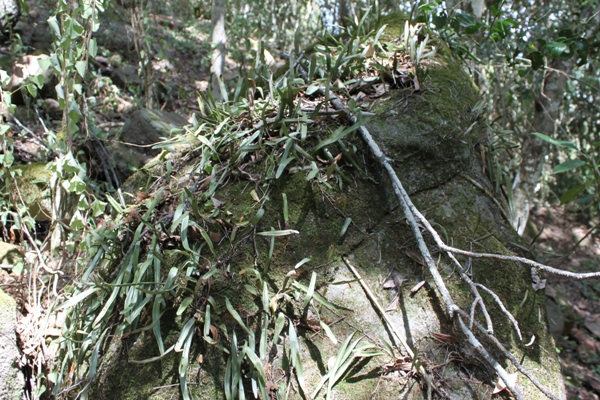
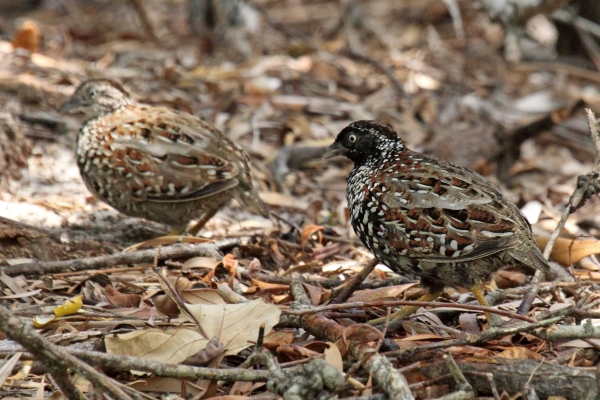
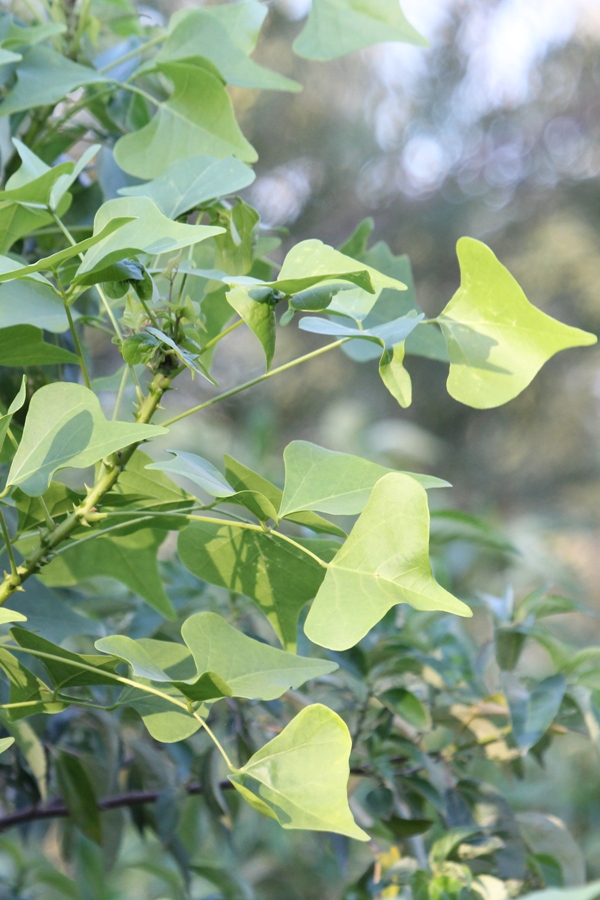
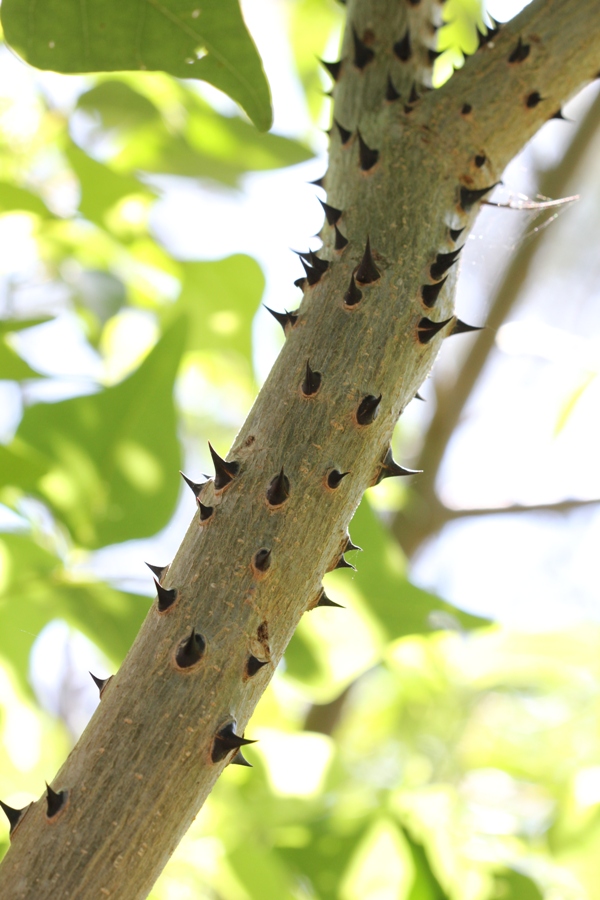
I recently purchased a property on the southern slope of Mount French (Bunjurgen) and am keen to properly identify the vegetation, tress, etc. The picture at the top of this page looks very much like our property? Is there anyone that you can point me to that would be able to properly identify our landscape and environmental value?
Hi Allan. Yes, you can join Land for Wildlife and get all that information. I will email you directly. Cheers!
Hi Team,
We are part of an interpretive content team working on a refurbishment of the Hidden Vale Wildlife Centre, in partnership with the University of Queensland.
We’re seeking permission to use one of the photos on this webpage (with credit to Land for Wildlife SEQ and/or the photographer), as part of the display info on semi-evergreen vine thicket.
I’ve left my email address if someone could get in touch. Much appreciated.
Hi
We have an 11 acre stand of semi evergreen vine thicket with a number of Black-fruited Thornbush Pittosporum viscidum – my question is – Is the fruit hazardous – considering using the fruit as a botanical in a spirit at our distillery?
Thanks
John
Good question! We don’t know the answer. Some Pittosporum species have edible fruit, but there is nothing online to say that P. viscidium is edible – so please assume that it is not!
Hi – thanks for speedy response – is there anybody or institution I can contact to investigate further?
Cheers
John
We suggest that the Queensland Herbarium would probably be your best source of information with regards to native plants.